Mark Bibby Jackson continues his visit to Cleveland Ohio discovering the creative side and the art in the city.
My trip to Cleveland coincides with the 32nd annual Parade the City, which attracts thousands of people to the Wade Oval. The day before the Parade I visited the Pivot Center, which was preparing for the grand occasion.
The centre is based in the old Astrup Awning factory and warehouse, transformed by local developer Rick Foran into a 74,000-square-foot centre for non-profit arts and social causes.
The pivot refers to the change of direction from Cleveland’s past – something which could be said of the whole city. The centre is open to the public on Fridays to Sundays and has three studios where you can drop in and create your own art. During my visit, there were lots of families sat around being creative, exploring art, much like my creative art class in Ramsgate just before this trip, an experience I found quite uplifting and liberating.
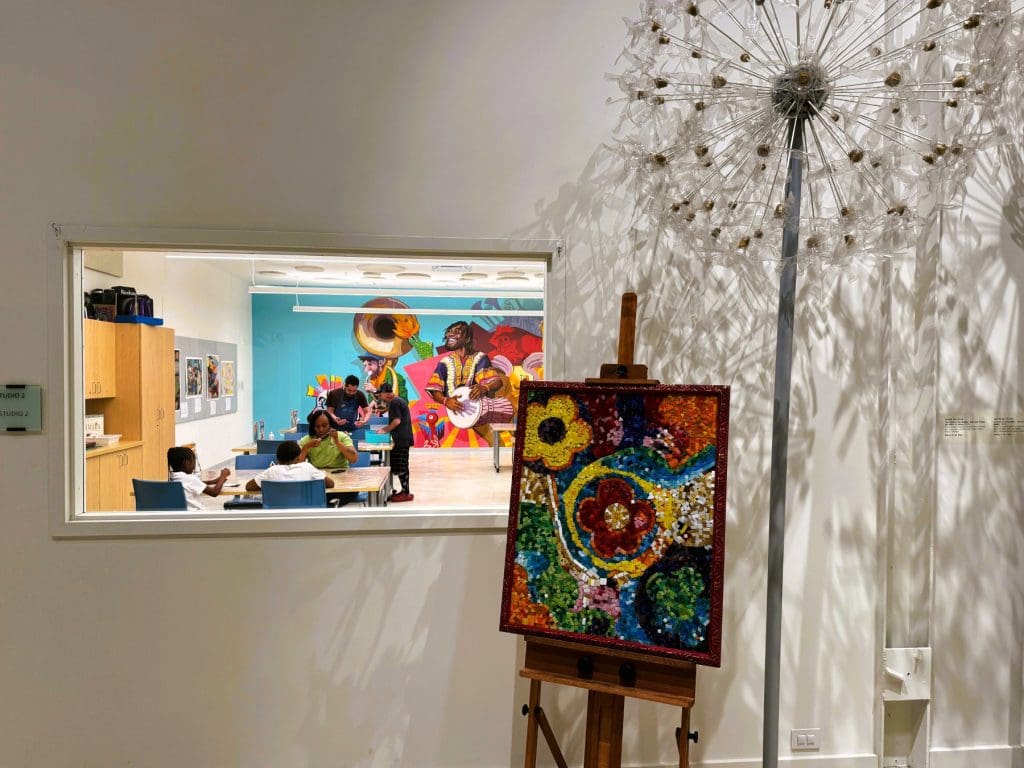
The vast centre also has a Latin Theatre with scheduled performances as well as The Community Arts Center where visitors are encouraged to touch the art, including costumes used in previous parades.
Cleveland Museum of Natural History
At Pivot, I was informed the parade would attract thousands of people involving more than 50 troupes, so I am looking forward to it when I visit Wade Circle the following day.
Arriving in the morning, I decide to visit some of the museums around the Circle before watching the Parade.
The Cleveland Museum of Natural History has a new visitor hall which opened just under a year ago. Free to enter, it has a massive dinosaur skeleton in its atrium – called Happy.
Cleveland Museum of Art Ohio
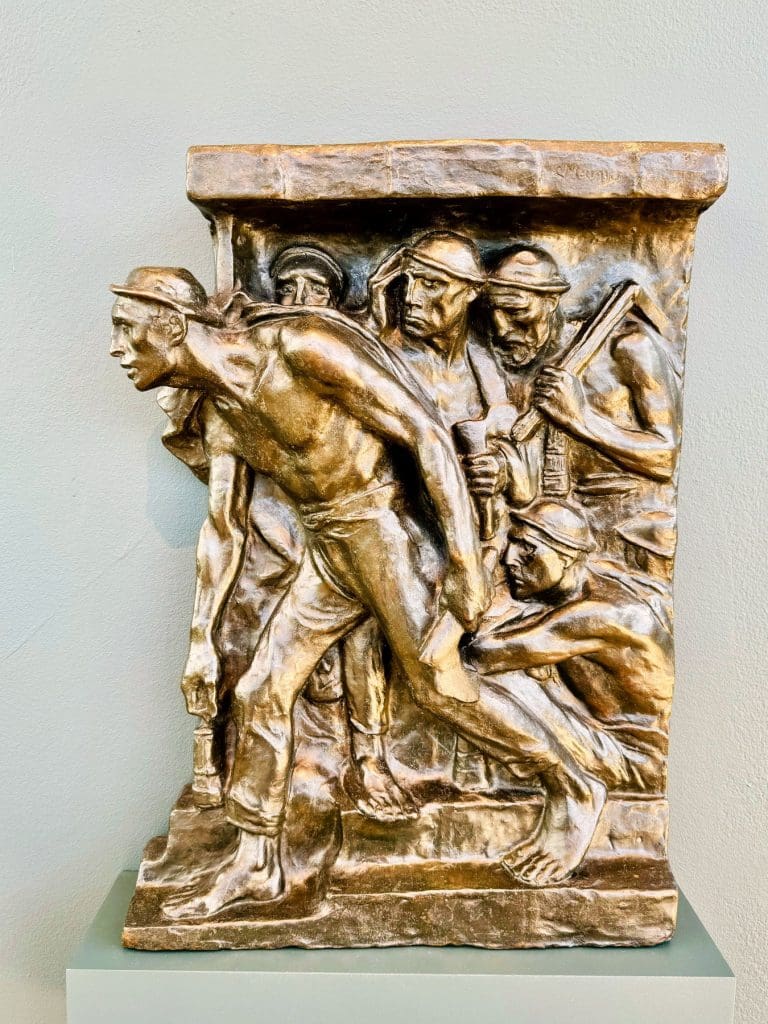
Next to it is the Cleveland Museum of Art. Also free to enter, this museum has a wonderful collection of sculptures in the Glass Box in the East Wing. Rodin’s powerful study of Honoré de Balzac immediately catches my eye, but Constantin Meunier’s The Furnace, The Miners and The Soil sculpture seems appropriate for the history of the region. They exude incredible power. However, perhaps my favourite is Renoir’s staggering The Judgement of Paris.
I like the way the sculptures are placed in a glass box, which almost makes them seem as though they are outside as originally intended, rather than stuck in a museum.
The Cleveland Museum of Art has a wonderful collection of European Art from Romanticism to Realism, and then Impressionism to Post-Impressionism. Cezanne, Gauguin, Van Gogh, Monet… the list is endless. Frieze of Dancers by Degas is phenomenal, ethereal yet colourful and full of motion.
I then pass onto the avant garde … Matisse, Picasso, Mondrian. I particularly like Picasso’s Bull, Skull, Fruit, Pitcher (1939) painted just after his mother’s death which references Guernica and the birth of democracy in Spain.
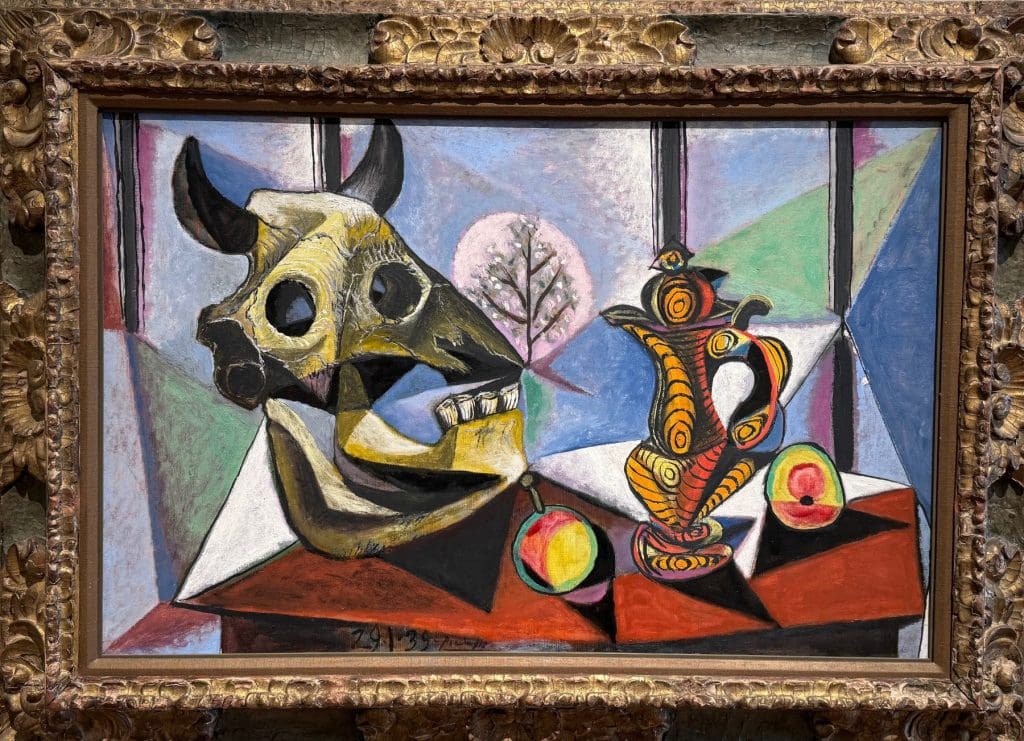
The Cleveland Museum of Art just keeps on giving. I pass though American Art to Abstract Expressionism, which includes an amazing Jackson Pollock until we reach more contemporary artists such as Warhol and Bourgeoise. In addition to the amazing quality of the art on display, there is a great sense of tranquillity and space. I discover this is partially due to most of the visitors gravitating towards the Asian art and downstairs where Egyptian, Greek, Islamic, Roman and Renaissance art can be found.
The leading Cleveland art museum was built during the city’s prime with an endowment from local industrialists. The neo-classical old building, which is where the medieval art is exhibited, opened in 1916. There have been several extensions including the wonderful atrium through which you enter when passing from the modern wing.
Upon arrival one of the people working at the museum advised me to exit through the old building. Her advice was excellent because outside lies a final treat, Rodin’s The Thinker on the steps leading from the excellent museum. Damaged by a bomb in 1970, this is thought to be the artist’s final cast of the famous sculpture and unique in that the damage created by the bomb has not been repaired.
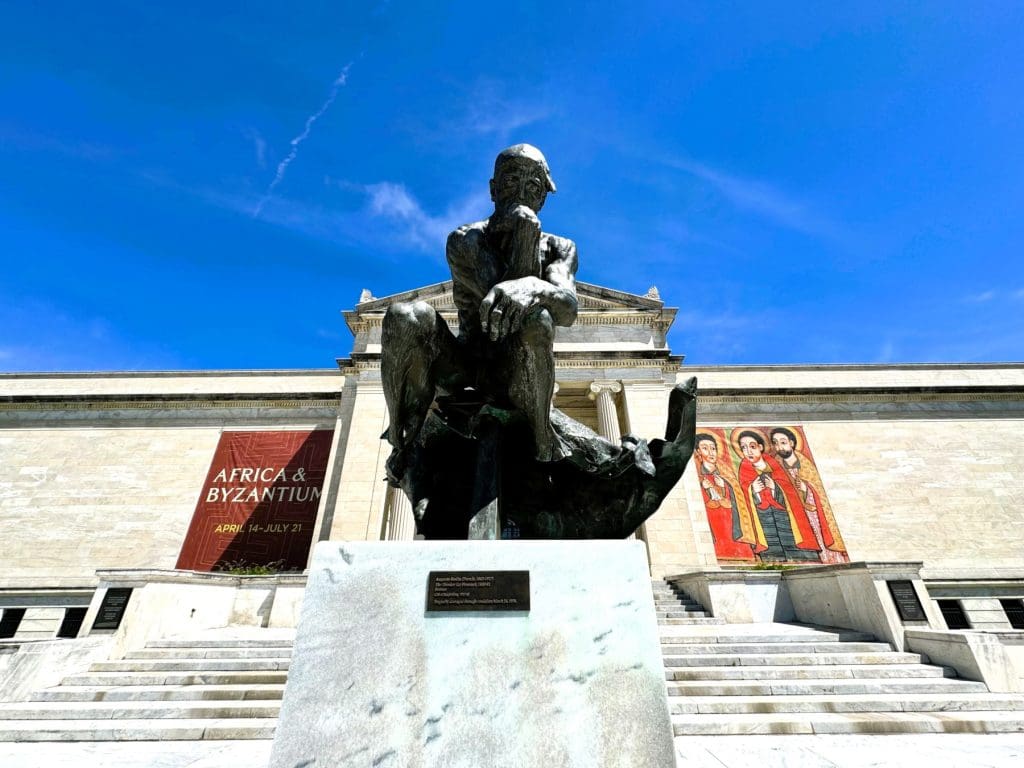
Cleveland History Center
Leaving the museum of art in Cleveland, I double back around the building I found myself at the Circle where the Parade was about to start. I started chatting with some of the participants in the parade before heading to my final stop in this circular museum tour.
The Cleveland History Center is a somewhat eclectic place. I enter through an exhibition of vintage cars, celebrating the city’s car making tradition – it rivalled Detroit. The 1911 Packard Model 30 Phaeton and 1960 Ford Thunderbird are beautiful cars. Behind this is a room recounting the history of Cleveland dating back to the 1795 Treaty of Greenville when native Americans gave the land to the settlers.
The museum does not shirk from the city’s dark period, including the 1966 riots and the Glenville shootout a couple of years’ later. However, it also celebrates the city’s successes – the creator of Superman came from Cleveland – and its recovery which can be traced to the hosting of the Republican Convention in 2016.
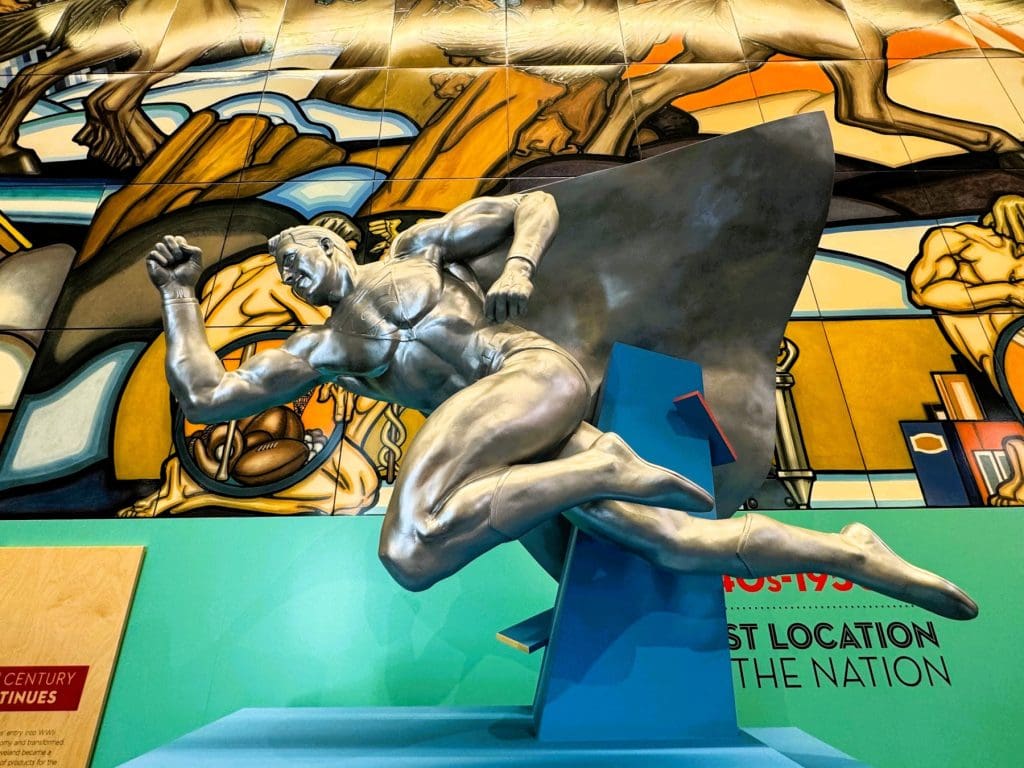
The museum also includes a couple of mansions that date back to Cleveland’s golden period at the beginning of the last century. Before reaching these little gems, you pass through an exhibition on the rights of women and labour struggles including two wonderful socialist realist style paintings by Stephanie ‘Stella’ Pohorecki.
Parade the City
By now the parade had commenced outside, so I leave the museum to join the fray. The theme of the parade is Visions of Harmony, and standing on the perimeter of the circle watching the paraders strut their stuff, the title seems most appropriate.
Cleveland might be the city of rock and roll but I am struck by the great Dixie Jazz played by some of the troupes as they circle the Circle. Despite the numbers, many people find space to sit around in deck chairs watching and cheering along the paraders. It is great fun.
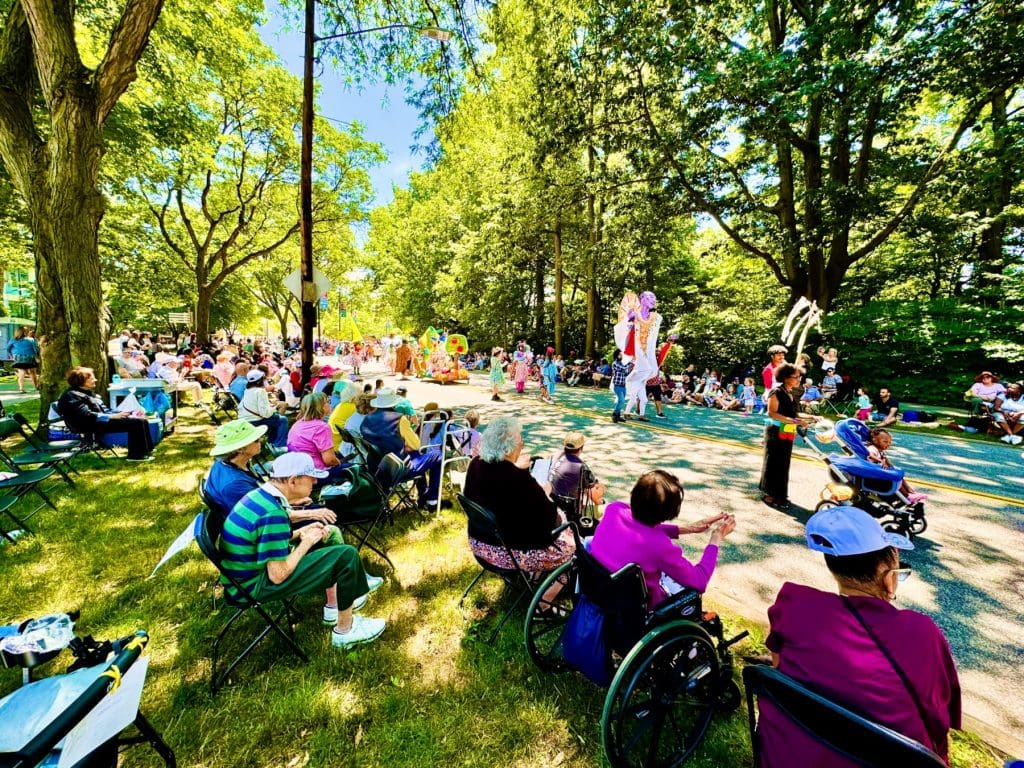
78th Street Studios
Unfortunately, I am not able to stay until the end of the Parade as I have a couple more appointments to make before catching the late Greyhound bus to Pittsburgh, the last of my three cities in the northwest states.
Rockefeller Park & Greenhouse is a botanical garden with seasonal floral displays and theme gardens. Still buzzing from the Parade, my head isn’t quite in the right place for this tranquil and very sustainable option.
I then take an uber – which proved wonderfully reliable throughout my trip – to the Gordon Square Arts District, across the Cuyahoga river in Ohio. This area is home to some theatres and great cafés such as Gypsy Beans, where I have a brilliant open hummus and artichoke sandwich with the most wonderful service – the healthiest and one of the tastiest foods on my trip.
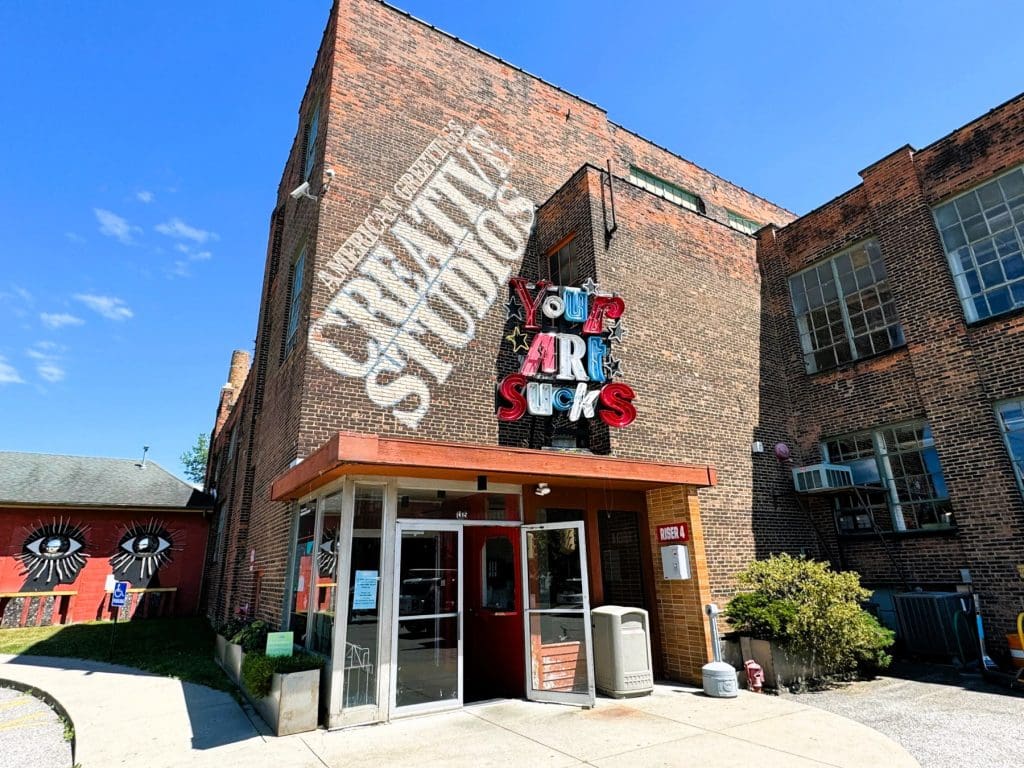
My main reason for coming here was to visit the 78th Street Studios, one of the leading centres for creatives and art in Cleveland. I have visited many industrial spaces repurposed into creative centres during my travels but few can rival 78th Street Studios.
The 1905 property was home to the Baker Electric Motor Vehicle Company. Now, it has been transformed into 170,000 square feet which has attracted creatives and start-ups in the area. I am shown around the building by Noelle Armitage.
She explains there are some 60 businesses here including a theatre, record store, non-profit museum and the Hedge Gallery. In total there are around 15 galleries.
On the third Friday of the month, they have an open night from 5pm to 9pm, which draws in more than a thousand people with bands playing and arts tours just like the one Noelle takes me on. The studios are open from Tuesday to Sunday to the general public.
The developers have tried to keep as many of the original features as possible, including the car lifts, which gives the space an incredible urban, industrial feel.
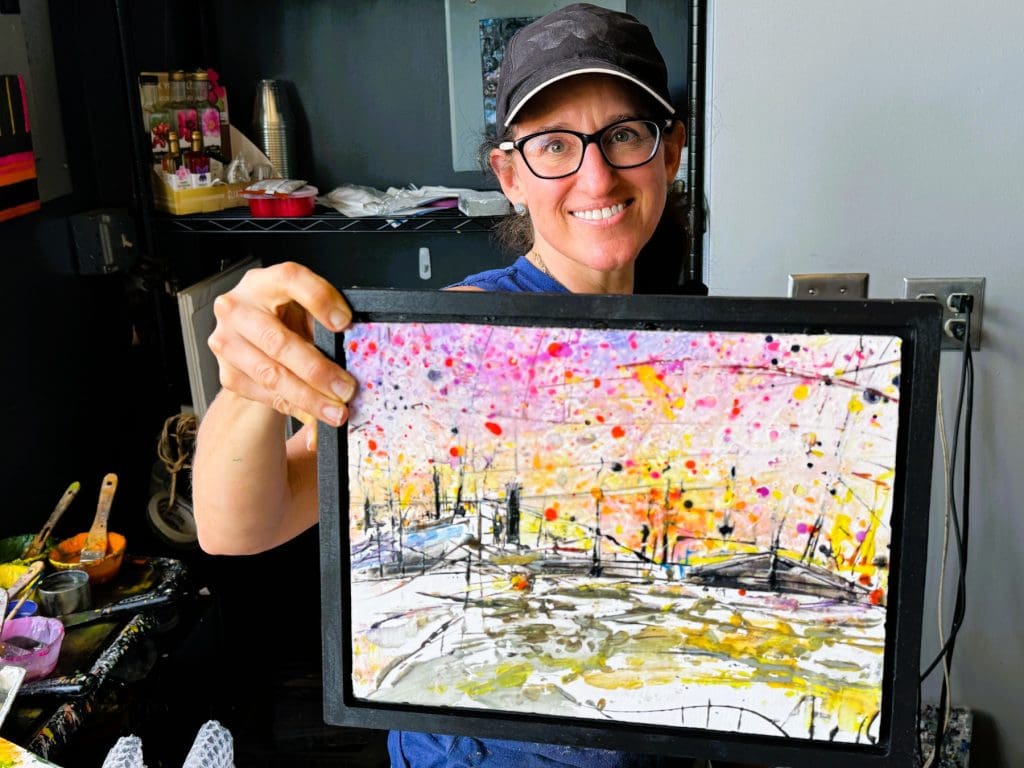
I chat with a few of the people who have taken up studios here. Dawn Tekler has been here 14 years. She is creating encaustic art and says she likes the camaraderie, while Bruce who is restoring stained glass is currently working on a window from a Victorian building. He says there is lots of cooperation between the artists and artisans at the complex.
Noelle explains they try to get a good mix. I pass a tattoo artist and film studios before joining Jennifer Frisco at The Tapestry Spool. She is one of the more recent arrivals at the studios only coming here in February. Having worked at Gap for several years, she now creates clothes from upcycled fabric. “All I wanted to do is play with clothes,” she explains about her career shift.
Over my two days in Cleveland, I have realised how creative and buzzing a city it is. Some 40 restaurants have opened in the last year, Noelle informs me, and many people come here from New York, like Jennifer, attracted by the creative vibe and more affordable cost of living.
Cleveland has thrown off its grim, industrial cloak. It is no longer the city of the burning river, but is a wonderful creative and green place to visit – the park spaces are expanding each year.
My final stop is at Hingetown, next to Ohio City. This is a historic LGBTQ+ district of the city. I have a final craft beer at Saucy Brew Works – how many microbreweries are there in Cleveland? Then I retrace my steps to the Drury Hotel to pick up my bags for my evening bus to Pittsburgh.
Things To Do in Cleveland Ohio
Cleveland is more than a city of art, to discover what else to do in Cleveland visit This is Cleveland.
Hotels in Cleveland Ohio
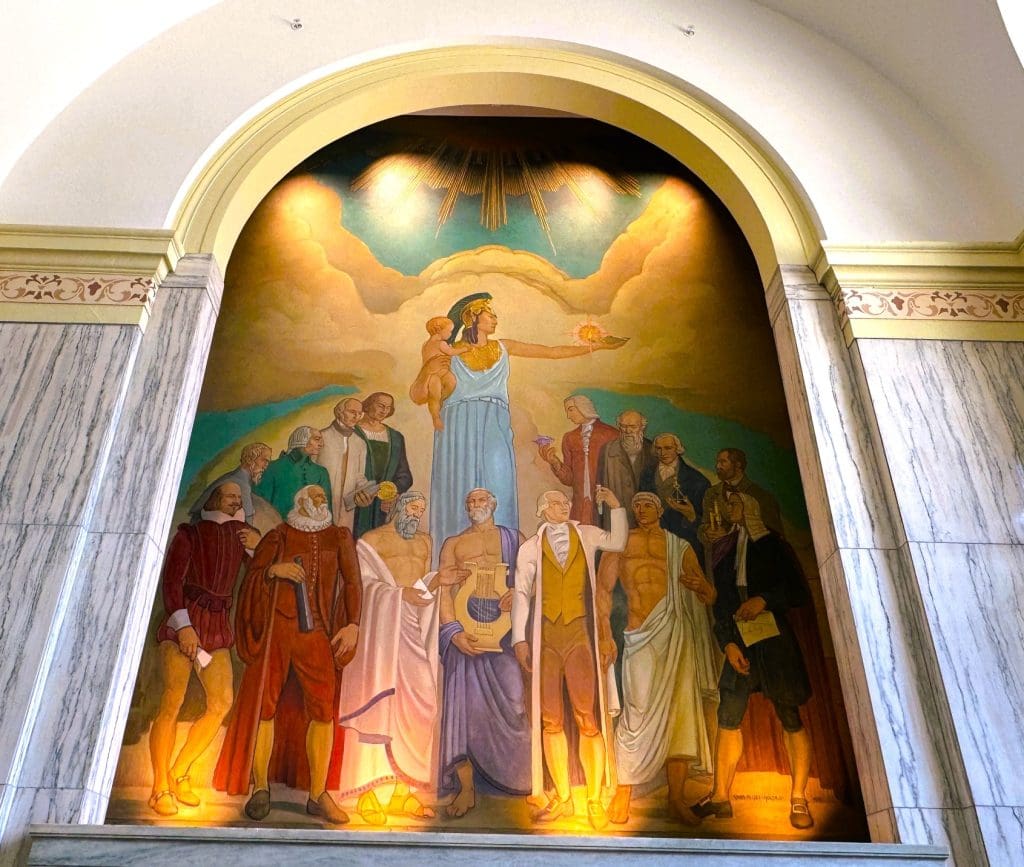 Looking for hotels in downtown Ohio, we recommend the Drury Plaza, especially for the wonderful murals by Cora Holden (above). Other hotels in Cleveland Ohio, can be found here.
Looking for hotels in downtown Ohio, we recommend the Drury Plaza, especially for the wonderful murals by Cora Holden (above). Other hotels in Cleveland Ohio, can be found here.
Art Galleries in Cleveland Ohio
For more insight on the art galleries in Cleveland Ohio, we suggest you click here.
Cleveland Ohio Weather
From deep snow to bright sunny days (at least on my visit), the weather in Cleveland Ohio is unpredictable. To predict it click here.
All images taken by Mark Bibby Jackson.